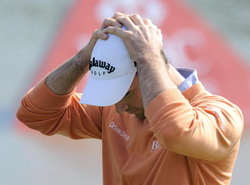 There’s something really interesting that happens to dedicated, serious golfers as they go about developing and improving their game. At some point of time many reach a stage of progress sometimes described as “arrested development” where they essentially reach an impasse with their golf performances and stop improving. This level has been described many ways by sports coaches such as; plateauing, leveling out, or becoming stale etc. Every time you come off the golf course after completing a round, your golf scores reflect your aptitude and attitude for creating your golf score. For many golfers it becomes more of a physical and psychological battle than a round of golf with their golf game taking control of them leaving them defeated, frustrated and unhappy. I think it’s one of the most fascinating aspects of golf performance psychology because it doesn’t seem to matter what improvement strategy the golfer takes, they discover yet another way to produce less than desirable scores. In-fact over the years I have met golfers who have been in this frustrating and unsettling place for literally years. 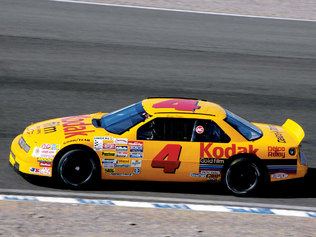 Golfer’s that reach this arrested development level will quite often change their equipment, change their golf instructor or even change their sport in an effort to change this condition. Quite often a change in equipment or instructor might do the trick but I have found that the problem has a lot more to do with how you go about improving your game rather than simply changing a brand of golf club. The way many advanced golfers practice tends to be based mostly on improving the golf swing performance to improve their golf scores which ends up being the limiting factor in improving their performances on the golf course. It’s like saying that the tyres on a racing car is the only factor that determines whether the driver will win the race or not, without considering all the other performance factors in the race car, like fuel for instance. Tyre's are very important on a racing car but they won’t do you much good if you run out of fuel before the end of the race. 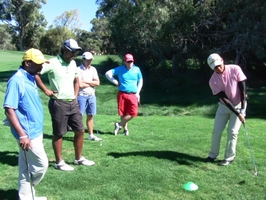 So determining exactly what you need to work on to improve your golf scores should be you starting point. If you were going to practice your golf skills on the practice range for five hours what skills would get the most attention? In other words, how much time would you allocate to each skill set and why? Study the skill sets below and rate each skill set in order of its importance to you right now in improving your golf scores on the golf course. Consider the makeup of your round and determine which skills have the greatest effect on your golf scores.
When you go about improving your golf skills you need to know whether the skills that you’re focusing on will actually make a difference to your bottom line golf score. It’s not uncommon for advanced golfers to be working on the wrong golf skills, particularly when they’re in the arrested development phase. 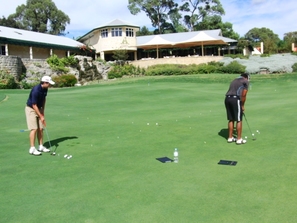 You need to find a simple way to measure your golf skill routine to determine which of the golf skills need more of your focus. It’s not unusual to hear a golfer describe themselves as a bad putter, but is the golfer a bad putter because they are missing putts that are outside of the makeable range? What is the makeable range? Well, you will discover when you test your putting skills that you will make a high percentage of the putts you attempt from 3 feet (85 - 95%) of the hole and almost half as many from six feet (45 - 55%) of the hole and almost half as many again from ten feet (15 - 25%) of the hole and so on. So the question you might need to ask yourself is this; “am I a bad putter because I’m trying to hole my putts for par from outside ten feet of the hole because I don’t realise that from this distance I would actually only make 15 to 25 percent (1 to 2 out of 10) of them?” Should the question really be re-framed to something like this; “what percentage of my chip and pitch shots around the green finish within six feet of the hole?” I bet you that if you get a high percentage of your chip and pitch shots within six feet of the hole that you will make more putts and your putting average will improve. This illustration is the same for other skills as well. 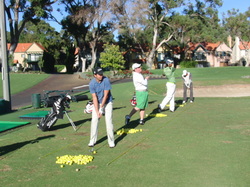 If you consider yourself a bad driver of the ball and you hit say 40 percent or less of the fairways that you attempt to hit when you use a driver, is it possible that by testing your driver skill on the driving range to a set of targets that are placed twenty yards apart at 200 yards that you achieve a forty percent success rate (4 out of 10 shots) with a driver and a sixty five percent success rate when you use a three wood, however when you set the targets on the range at twenty five yards apart you now can achieve sixty percent success rate with your driver. So whenever you play a hole that has a fairway twenty yards wide at your driving distance you will take a three wood from the tee instead of your driver. If the fairway is twenty five yards wide you can confidently take your driver and swing away confidently. By measuring your different skill sets in this manner you can accurately determine which skills need more of your attention and which need less. Every golfer uses a formula for producing their golf scores and by measuring the elements that make up your golf score you can change the formula so that you break free from your arrested development and go on to produce better and more consistent rounds of golf. Lawrie Montague and David Milne - Pro Tour Golf College The Professional Golf Tour Training College If you are seriously considering joining our next semester at Pro Tour Golf College then contact us now at [email protected] if you are. You won't regret it. 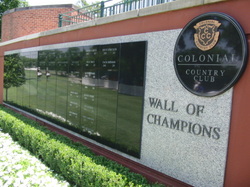 When you arrive at Colonial G.C. for the first time and walk to the first tee you are met by the Wall of Champions. The names on the wall (which date back to 1946) have won this tournament and many have won on multiple occassions. The names are the "who's who" of golfs past, present and future "Hall of Famers". Hogan, Palmer, Nicklaus it is an impressive list of Champions. The course was founded in 1936 by Marvin Leonard and has hosted numerous major amateur and professional tournaments over the years. It is one of the few courses in this part of the USA that has "bent" grass greens. Combined with the small size and undulating surfaces it makes hitting your approach shots close a challenge, especially if the wind blows, like the weather forecast has been predicting. 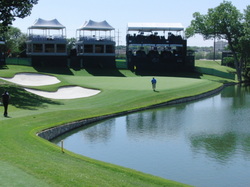 The course plays just over 7000 yards which by today's standards is considered short, but this older course still has the ability to challenge the modern professional golfer. When you look down the list of multiple winners here at Colonial G.C. the names like Hogan (4 titles), Pavin (3 titles) jump out and the reason is that you have to drive it straight and shape the ball both ways if you want to be in position to be able to get to the pins, which will almost be sure to be set in tight positions behind the perfectly positioned bunkers. Short siding yourself is not a good idea around here as the landing area from the bunkers and grass hollows around the green will always be downhill and this makes stopping your recovery shot almost impossible. The majority of winners like last years winner Zac Johnson are straight drivers of the ball, able to hit their approach shots with excellent distance control and are in the top ten in the scrambling category. The rough has been lowered this year so scores should be low if the weather does not interfere too much. 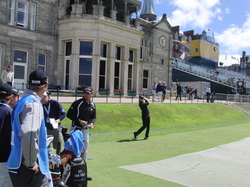 I am here working with Michael Sim and next week at the Byron Nelson Classic, and these two events form the "Texas Swing" on the USPGA Tour. It follows the "West Coast" and "Florida" swings. On Tuesday we spent 4 hours on the range had lunch then Michael played a few holes with fellow Aussies Adam Scott and Jason Day. Both these guys are in good form and as this is Jasons home course (being based in Dallas and a member of Colonial G.C.) he is rated a hot favourite to win. In fact John Senden, Greg Chalmers and Rod Pampling also call Dallas home and with the other Aussies playing Mark Leishman, Nathan Green we could possibly have another Aussie winner. Australians that have won here in the past are Ian Baker-Finch and Bruce Devlin more straight drivers and great iron players! 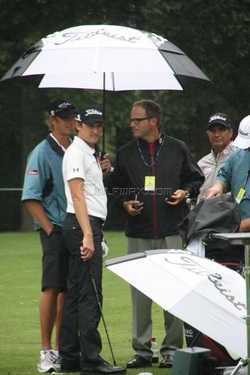 With rain (occasional thunder storm) and wind forecasted everyday we could possibly see a Monday finish which will throw a spanner in the works for those who are entered on Monday to play the US 36 hole Qualifying for the British Open in July. So preparation this week has been for Michael to be ready mentally to play start stop golf over the next few days which could be on the cards. "The players who are patient and don't allow frustration to creep into their game will put themselves in position to do well this week." Michael's regular caddy Matthew "Bussy" Tritton will have his work cut out on and off the course. The bag will be loaded up with at least 3 towels, extra gloves, tour umbrella (these add weight) to the already heavy tour bag, extra food snacks and sandwich's in case of delays. Keeping the grips dry throughout the round will be the ultimate task apart from calculating the correct distance for each shot and working out exactly where the wind is blowing from! And you thought the caddy just carried the bag... On the subject of caddies the gossip from the Tour this week is that Adam Scott and Tony Navarro have parted ways after 8 years. Adam has got Mick Doran a British caddy on the bag and I will keep you up to speed on how that working relationship develops. Watched Adam putting with the broomstick putter and he looks good and is putting with heaps more confidence then previously. Tomorrow the first round begins and I believe the winning score will be between 16 to 20 under depending on the weather. Good Golfing from the Tour David Milne from Colonial Country Club - Fort Worth Texas Both David and I like many golfers around the world who grew up playing competitive golf in the 70's and 80's know how good Seve Ballesteros was. His creative shot-making made him a gallery favourite where ever he played. For the younger generation of golfers who read our blog and don't really know a lot about Seve, take it from us, this man played a brand of golf that was so memorable because of his ability to hit brilliant recovery shots from places that others would simply take the easy option, especially when everything was on the line. Seve will be best remembered for his fighting qualities and never say never attitude. A lot has been written about him this week but we think the following videos are a fitting way to finish the blog today. We will miss you Seve. PGA TOUR Victories (9)
1978 Greater Greensboro Open. 1979 British Open Championship. 1980 Masters Tournament. 1983 Masters Tournament, Manufacturers Hanover Westchester Classic. 1984 British Open Championship. 1985 USF&G Classic. 1988 Manufacturers Hanover Westchester Classic, British Open Championship. Other Victories (79) 1974 Campeonato Nacional Para Sub-25, Vizcaya Open. 1975 Campeonato Nacional Para Sub-25. 1976 Dutch Open, Trophee Lancome, Memorial Donald Swaelens, Campeonato de Cataluna, Campeonato de Tenerife. 1977 French Open, Uniroyal International, Swiss Open, Braun International Golf, Japanese Open, Dunlop Phoenix, Otago Classic. 1978 Martini International, German Open, Scandanavian Enterprise Open, Swiss Open, Kenya Open, Campeonato de Espana Sub-25, Japanese Open. 1979 English Golf Classic, Open el Prat. 1980 Madrid Open, Martini International, Dutch Open. 1981 Scandanavian Enterprise Open, Benson and Hedges Spanish Open, Australian PGA Championship, Suntory World Match Play Championship, Dunlop Phoenix. 1982 Cepsa Madrid Open, Paco Rabanne French Open, Masters de San Remo, Suntory World Match Play Championship. 1983 Sun Alliance PGA Championship, Carrolls Irish Open, Trophee Lancome, Million Dollar Challenge. 1984 Suntory World Match Play Championship, Million Dollar Challenge. 1985 Carrolls Irish Open, Peugeot French Open, Sanyo Open, Benson and Hedges Spanish Open, Campeonato de Espana-Codomiu, Suntory World Match Play Championship. 1986 Dunhill British Masters, Carrolls Irish Open, Johnnie Walker Monte Carlo Open, Peugeot French Open, KLM Dutch Open, Trophee Lancome. 1987 Suze Open, APG Larios, Campeonato de Espana Para Profesionales. 1988 Mallorca Open de Baleares, Scandanavian Enterprise Open, German Open, Trophee Lancome, APG Larios, VISA Taiheiyo Masters. 1989 Cepsa Madrid Open, Epson Grand Prix, Ebel European Masters-Swiss Open. 1990 Open Renault de Baleares. 1991 Volvo PGA Championship, Dunhill British Masters, Toyota World Match Play Championship, Chunichi Crowns Open. 1992 Dubai Desert Classic, Turespana Open de Baleares, Copa Quinto Lentenario per Equipos. 1994 Benson and Hedges International Open, Mercedes German Masters. 1995 Peugeot Open de Espana, Tournoi Perrier de Paris [with Jose Maria Olazabal]. David and Lawrie  Mental toughness is one of the most important characteristics you can develop in order to perform successfully in golf tournaments. Mental toughness is having the natural or developed psychological edge which enables you to generally cope better than the majority of other golfers with the many demands that golf asks of you as a competitor. Specifically, mental toughness means that you're more consistent and better in remaining determined, focused, confident, resilient, and in control under the pressure of tournament conditions. The key component of mental toughness is learning how to condition your mind to think confidently and overcome frustration or self-critical negativity. This is what I call managing the monster within. We all have a monster inside of us who can move us into unresourceful states where we struggle with our emotions and ability to persist during challenging times when we seem to be battling ourself more than the golf course. At Pro Tour Golf College both David and I are well aware of the monster that lurks within and its ability to control and destroy your performances on the golf course. To become a top golfer you need to get control of your monster and ideally kill it so that it allows you to perform more to your potential. You need highly effective weapons to fight and kill the monster, and you will need to be excellent in the following seven areas if you want to truly develop your competitive capability in tournaments. 1. Control Your Self-Confidence You need to believe that you can perform well and be successful everytime you play a round of golf in a golf tournament 2. Control Your Negative Energy You need to easily cope with the negative emotions of fear, anger, frustration and temper if you're going to be successful in golf tournaments 3. Control Your Attention You need to stay focused to perform well in golf tournaments 4. Control Your Visualization and Imagery You need to be able to create positive mental images that engage your attention which will reduce the mistakes you make during a competitive round 5. Control Your Motivation Level You must have the energy and willingness to persevere even when it seems hopeless to do so 6. Control Positive Energy You should have abundant energy and be open to experiencing fun and satisfaction when you compete in golf tournaments 7. Control Your Attitude You must develop the habits of optimistic thinking and a never say never attitude How Much Monster Do You Have in You Right Now? If you are fighting the golf monster within, contact us today, and we'll show you how you can get rid of your monster by developing these highly important skills in your golf game, which will enable you to become calm, confident and courageous when you compete in golf tournaments.
Until next time, Lawrie Montague and David Milne |
Archives
June 2019
|
Proudly Supported By
Copyright © 2011 - 2018 Pro Tour Golf College
Website Managed By Golf Performance Media
All Rights Reserved
Website Managed By Golf Performance Media
All Rights Reserved



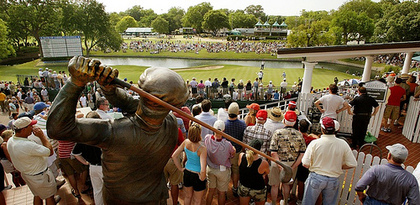
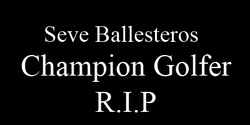
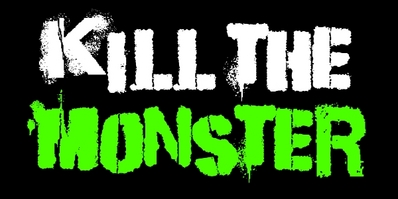

 RSS Feed
RSS Feed



